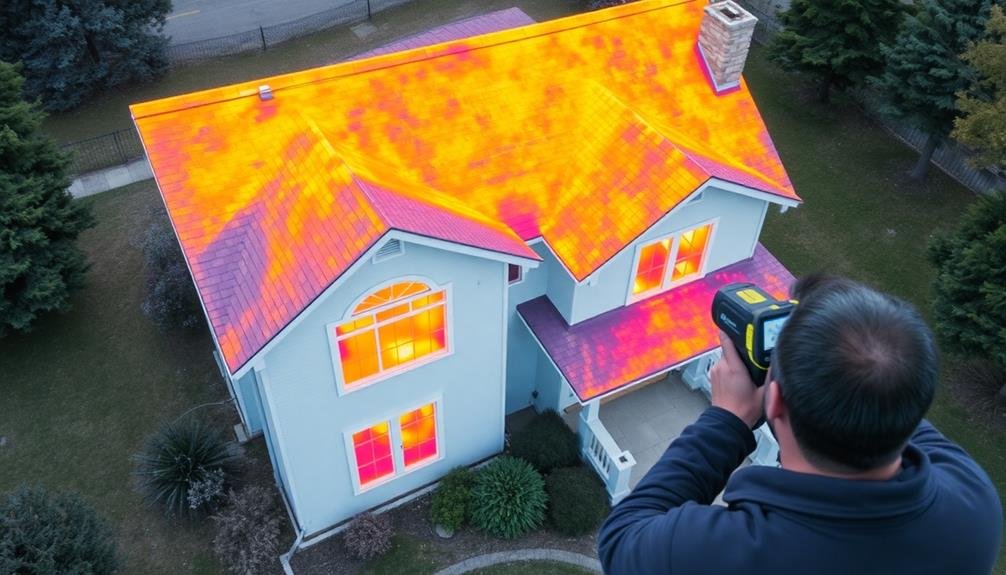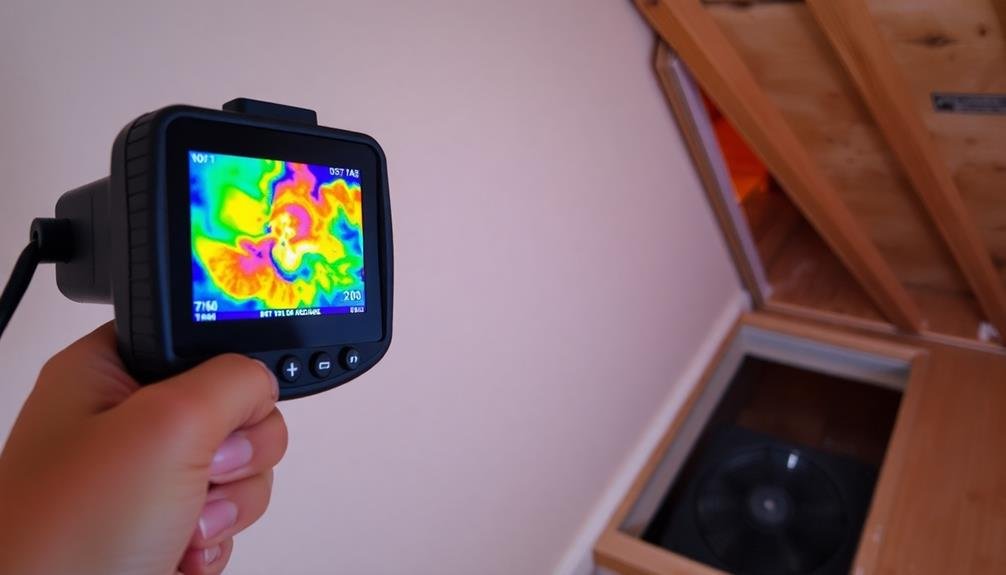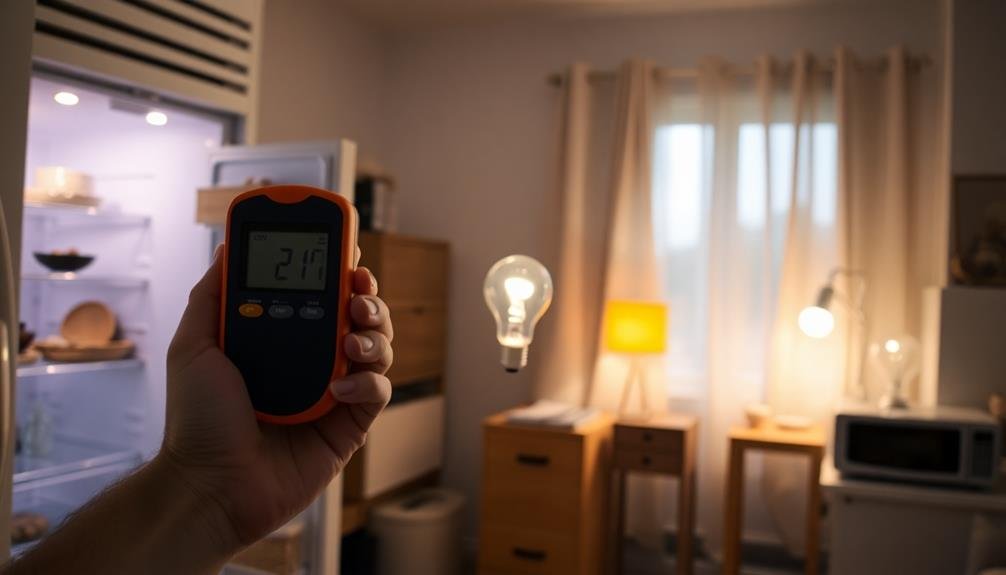To conduct your own home energy audit, start by evaluating your home's exterior for cracks, gaps, and insulation issues. Next, inspect windows and doors for drafts, checking weatherstripping and caulking. Then, assess insulation and ventilation in your attic, walls, and basement, ensuring proper airflow. Examine your heating and cooling systems, replacing dirty filters and sealing ductwork. Finally, review your lighting and appliances, replacing inefficient bulbs and identifying energy-hungry devices. By following these five steps, you'll uncover ways to save money and reduce your environmental impact. Dive deeper to maximize your home's energy efficiency and comfort.
Assess Your Home's Exterior

When beginning your home energy audit, it's crucial to start with the exterior. Walk around your house and inspect the walls, roof, and foundation. Look for cracks, gaps, or areas where insulation might be lacking.
Pay close attention to windows and doors, as these are common sources of drafts and energy loss. Check for proper weatherstripping and caulking around all openings.
Examine your roof for missing or damaged shingles that could lead to water damage and reduced energy efficiency. Inspect gutters and downspouts to verify proper drainage, preventing moisture issues that can affect your home's overall energy performance.
Don't forget to evaluate your landscaping. Trees and shrubs can provide natural shading and wind protection, potentially reducing your energy costs. Consider the placement of vegetation and how it impacts your home's exposure to sun and wind throughout the year.
Lastly, take note of any exterior equipment like air conditioning units or heat pumps. Confirm they're clean, unobstructed, and operating efficiently.
Inspect Windows and Doors
After examining the exterior, focus in on your windows and doors. These are common areas where air leaks occur, leading to energy loss. Check for visible gaps or cracks around window and door frames. Run your hand along the edges to feel for drafts. Use a lit candle or incense stick to detect air movement near these openings.
Inspect the condition of weatherstripping and caulking. If they're worn, cracked, or missing, they'll need replacement. Look for foggy windows, which indicate seal failure in double-paned glass. Test your doors for proper closure and alignment. A door that doesn't seal tightly when closed is wasting energy.
Don't forget to examine less obvious spots like mail slots, pet doors, and around air conditioning units installed in windows. These can be notable sources of air leakage. For sliding glass doors, verify the tracks are clean and the door slides smoothly to create a proper seal.
If you have single-pane windows, consider upgrading to double-pane or adding storm windows for better insulation. Similarly, older doors might benefit from replacement with more energy-efficient models. These improvements can greatly reduce your home's energy consumption and increase comfort.
Evaluate Insulation and Ventilation

Proper insulation and ventilation are often overlooked yet essential components of an energy-efficient home. To evaluate your insulation, check your attic, walls, and basement. Look for gaps, compressed areas, or missing insulation. Measure the insulation's thickness and compare it to recommended R-values for your region. Don't forget to inspect around pipes, ductwork, and electrical outlets.
For ventilation, examine your attic and crawl spaces. Confirm there's proper airflow to prevent moisture buildup and mold growth. Check that soffit vents aren't blocked by insulation and that ridge vents or gable vents are functioning correctly. Inspect bathroom and kitchen exhaust fans, making sure they're venting outside and not into the attic.
Consider using a thermal camera or hiring a professional for a more thorough assessment. They can identify hidden air leaks and insulation gaps that you might miss.
If you find issues, prioritize improvements based on potential energy savings. Adding insulation to your attic is often the most cost-effective upgrade.
Don't overlook the importance of proper ventilation when making insulation improvements, as they work together to create a comfortable, energy-efficient home.
Examine Heating and Cooling Systems
Your home's heating and cooling systems play a major role in energy consumption and comfort. To examine these systems, start by locating your HVAC units, including furnaces, air conditioners, and heat pumps.
Check their age, condition, and efficiency ratings. Older systems may be less efficient and could benefit from an upgrade.
Inspect air filters and replace them if they're dirty. Clean filters improve airflow and reduce energy waste.
Look for any visible damage or leaks in ductwork, sealing gaps with metal-backed tape or mastic sealant. Verify vents and registers aren't blocked by furniture or curtains.
Test your thermostat's accuracy by comparing its reading to a separate thermometer. Consider upgrading to a programmable or smart thermostat for better temperature control.
Examine insulation around ducts, especially in unconditioned spaces like attics or crawl spaces.
Don't forget to assess supplementary heating and cooling devices like space heaters, ceiling fans, or window air conditioners. These can notably impact your energy use.
Review Lighting and Appliances

When reviewing lighting and appliances, start by taking inventory of all light fixtures and bulbs in your home. Note the type of bulbs you're using (incandescent, CFL, LED) and their wattage. Replace any inefficient bulbs with energy-saving LED alternatives.
Check for unnecessary lighting and consider installing dimmer switches or motion sensors to reduce energy waste.
Next, examine your major appliances. Look at the age and energy ratings of your refrigerator, dishwasher, washing machine, and dryer. Older appliances often consume more energy than newer, energy-efficient models.
Check the EnergyGuide labels to compare your appliances' energy use with newer models.
Don't forget about smaller appliances and electronics. Many of these devices draw power even when turned off, known as "vampire" or standby power.
Use a power meter to identify which items are the biggest energy drains. Consider using smart power strips to cut off standby power to multiple devices at once.
Lastly, evaluate your habits. Are you leaving lights on in empty rooms? Running half-empty loads of laundry?
Small changes in behavior can lead to significant energy savings over time.
Frequently Asked Questions
How Much Money Can I Save by Conducting a Home Energy Audit?
You can save up to 30% on your energy bills by conducting a home energy audit. It'll help you identify areas of waste and inefficiency, allowing you to make targeted improvements that reduce your energy consumption and costs.
Do I Need Special Equipment or Tools for a DIY Energy Audit?
You don't need special equipment for a basic DIY energy audit. You'll mainly use your eyes and hands to inspect your home. A flashlight, thermometer, and notepad can be helpful, but they're not essential.
How Often Should I Perform a Home Energy Audit?
You should perform a home energy audit annually. If you've made significant changes or upgrades to your home, do it sooner. Also, conduct an audit when you notice unexplained increases in your energy bills. It's a proactive approach.
Are There Professional Certifications for Home Energy Auditors?
Yes, there are professional certifications for home energy auditors. You'll find certifications like BPI (Building Performance Institute) and RESNET (Residential Energy Services Network). These credentials guarantee auditors have the necessary skills to assess your home's energy efficiency effectively.
Can Renters Conduct Energy Audits, or Is It Only for Homeowners?
Yes, you can conduct energy audits as a renter. You'll focus on your living space and habits rather than structural changes. It's a great way to save money and energy, even if you don't own the property.
In Summary
You've now completed your own home energy audit! By evaluating your home's exterior, inspecting windows and doors, reviewing insulation and ventilation, examining heating and cooling systems, and assessing lighting and appliances, you've taken essential steps towards energy efficiency. Don't stop here – use your findings to make necessary improvements. Remember, small changes can lead to significant energy savings. Keep monitoring your energy usage and stay proactive in maintaining an efficient home. Your wallet and the environment will thank you!





Leave a Reply